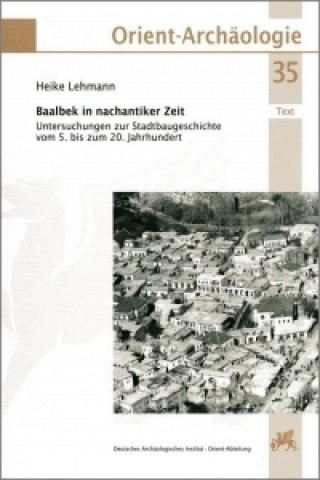
Kod: 12762975
Lehmann, H: Baalbek in nachantiker Zeit
Autor Heike Lehmann
Die Weltkulturerbestätte von Baalbek im Libanon gehört zu den ältesten kontinuierlich besiedelten Städten der Welt. Im Zentrum steht das monumentale römische Jupiterheiligtum, das in byzantinischer Zeit christianisiert und im isla ... więcej
- Język:
 Arabski
Arabski - Oprawa: Twarda
- ISBN-13: 9783896466655
Wydawca: VML Verlag Marie Leidorf
- Więcej informacji o książce

314.63 zł
Zwykle: 314.69 zł
Oszczędzasz 0.05 zł
Dostępność:
50 % szansa Otrzymaliśmy informację, że książka może być ponownie dostępna. Na podstawie państwa zamówienia, postaramy się książkę sprowadzić w terminie do 6 tygodni. Gwarancja pełnego zwrotu pieniędzy, jeśli książka nie zostanie zabezpieczona.
Otrzymaliśmy informację, że książka może być ponownie dostępna. Na podstawie państwa zamówienia, postaramy się książkę sprowadzić w terminie do 6 tygodni. Gwarancja pełnego zwrotu pieniędzy, jeśli książka nie zostanie zabezpieczona.Przeszukamy cały świat
Bon podarunkowy: Radość gwarantowana
- Podaruj bon o dowolnej wartości, a my się zajmiemy resztą.
- Bon podarunkowy dotyczy całej naszej oferty.
- Możesz wydrukować elektroniczny bon z e-maila a następnie przekazać go obdarowanemu.
- Ważność bonu wynosi 12 miesięcy od daty wystawienia.
Powiadomienie o dostępności
Wpisz swój adres e-mail, aby otrzymać od nas powiadomienie,
gdy książka będzie dostępna. Proste, prawda?
Więcej informacji o Lehmann, H: Baalbek in nachantiker Zeit
Za ten zakup dostaniesz 183 punkty
 Opis
Opis
Die Weltkulturerbestätte von Baalbek im Libanon gehört zu den ältesten kontinuierlich besiedelten Städten der Welt. Im Zentrum steht das monumentale römische Jupiterheiligtum, das in byzantinischer Zeit christianisiert und im islamischen Mittelalter zur Zitadelle ausgebaut wurde. In allen nachantiken Epochen wurde stets ökonomisch die ältere Bausubstanz in neue Bauvorhaben einbezogen. Größere Veränderungen fanden im Zuge der Christianisierung [4.-6. Jh.] statt, als Tempel umgewidmet, Kirchen und Straßen neu gebaut wurden. Mit dem Bustan Nassif wurde ein komplettes mittelalterliches Stadtviertel mit Wohnhäusern in fünf Bautypen, Suq-Gassen und öffentlichen Gebäuden ausgegraben. Andere Umbauphasen waren schweren Erdbeben des 12. Jhs. und der Mongoleninvasion des 13. Jhs. geschuldet. Die mittelalterliche Stadt war einerseits ein reicher Handelsplatz, andererseits ein wichtiges geistig-religiöses Zentrum. Die zweite Blütezeit im 19. Jh. hängt mit den "Tanzimat"-Reformen im Osmanischen Reich zusammen und spiegelt sich u.a. in Zentralhallenhäusern im christlichen Teil der Stadt und einer Bauverdichtung in der muslimischen Altstadt. The World Heritage site of Baalbek in Lebanon is amongst the oldest cities of the world with a continuous occupation. In its centre there is the monumental Roman sanctuary of Jupiter which had been Christianised in Byzantine times and turned into a citadel in the Islamic Middle Ages. In all post-Antique periods earlier building structures were economically included into new building measures. Major alterations occurred in the time of Christianisation [4th to 6th century], when temples were re-dedicated and churches and roads newly built. With the Bustan Nassif an entire Medieval city quarter has been excavated including its residential buildings of five different types, its souq lanes, and public buildings. Other rebuilding phases were owed to serious earthquakes of the 12th and Mongolian invasions of the 13th century. The Medieval city was both a rich commercial town and an important spiritual and religious centre. Its second heyday in the 19th century was connected to the "Tanzimat" reforms reorganising the Osman Empire and is reflected e.g. by houses with a central hall in the Christian quarter and redensification in the historic Muslim city centre.
 Szczegóły książki
Szczegóły książki
314.63 zł
- Pełny tytuł: Lehmann, H: Baalbek in nachantiker Zeit
- Autor: Heike Lehmann
- Język:
 Arabski
Arabski - Oprawa: Twarda
- EAN: 9783896466655
- ISBN: 3896466658
- ID: 12762975
- Wydawca: VML Verlag Marie Leidorf
Ulubione w innej kategorii
-
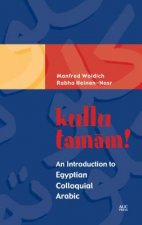
Kullu Tamam!
203.98 zł -

Thousand Splendid Suns
52.45 zł -15 % -

Gramatika současné arabštiny
49.43 zł -25 % -
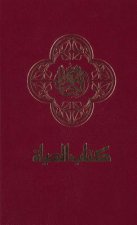
Arabic Bible-FL
125.55 zł -4 % -

Al-Ajniha Al-Mutakassira ( Arabic Edition )
34.32 zł -

Heidi
40.46 zł -9 % -

Arabic Writing Workbook
57.48 zł -5 % -
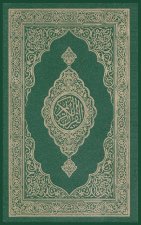
Al-Quran Al-Kareem
181.23 zł -

Ardh Al Burtuqal Al Hazin: Short Stories in Arabic
140.85 zł -

Shu'ara Al Arab Nizar Qabbani
61.61 zł -

El-Ameer El-Saghir
85.47 zł -9 % -

Al-Amir al-saghir
58.49 zł -5 % -

Burnt Shadows
47.31 zł -15 % -

Arabština konverzace
41.67 zł -26 % -

Bell and the Minaret
42.38 zł -14 % -

Mushaf: Quran Kareem
162.29 zł -
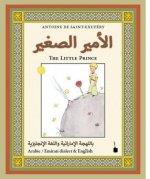
El-Ameer El-Saghir
131.39 zł -10 % -

Al-Arwah Al-Mutamarrida ( Arabic Edition )
34.32 zł -

Answer Key to Al-Kitaab fii Tacallum al-cArabiyya
47.71 zł -

Noon: Arabic Novel
41.88 zł -
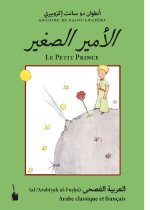
/ El-Ameer El-Saghir / Le Petit Prince
85.47 zł -9 % -

Corsair
62.62 zł -14 % -

Hello! Arabski Błyskawiczny kurs obrazkowy (poziom podstawowy A1)
46.71 zł -29 % -

Pale View of the Hills
64.33 zł -
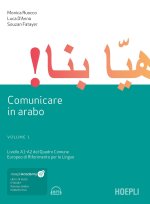
Comunicare in arabo
142.26 zł -

Ghada Al Samman Kawabis Beirut: Maqalat Adabiyyah
95.54 zł -

Al-Kitaab fii Tacallum al-cArabiyya
403.24 zł -

Arwah' Kilimanjaro
52.45 zł -15 % -

El-Bakhila ( Arabic Edition )
33.27 zł -
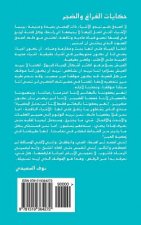
Stories of Boredom and Emptiness
41.50 zł -

Antara ( Arabic Edition )
37.77 zł -

OUTRE-CHOEUR (livre-CD)
114.27 zł -
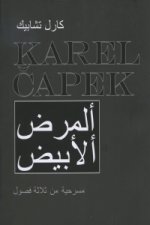
BÍLÁ NEMOC
18.72 zł -12 % -

Lonely Planet Egyptian Arabic Phrasebook & Dictionary
54.36 zł -
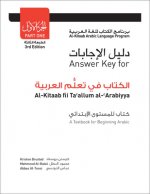
Answer Key for Al-Kitaab fii Tacallum al-cArabiyya
28.99 zł -20 % -

An-Nabi
50.63 zł -4 % -

Kallimni 'Arabi Bishweesh
199.25 zł -

Lughatuna al-Fusha
229.96 zł -

Answer Key for Al-Kitaab fii Tacallum al-cArabiyya
47.71 zł -

Saint Coran tajweed 14 X 20 avec plaque dorEe-argentEe couverture velours - (Arabe)
136.22 zł -

Arabic in a Flash Kit Volume 1
105.81 zł -

Formal Spoken Arabic Basic Course with MP3 Files
281.01 zł -

Noble Quran
297.32 zł -
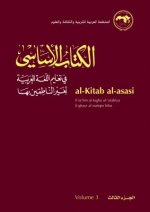
Al-Kitab Al-asasi vol. 3
223.92 zł -

As-Salaamu 'Alaykum Teacher's Guide: Textbook for learning & teaching Arabic as a foreign language
117.72 zł -

Modern Arabic Short Stories
69.67 zł -4 % -

And the Mountains Echoed
57.48 zł -14 % -

Kallimni 'Arabi Mazboot
191.80 zł -
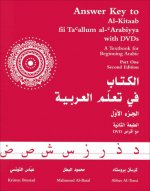
Answer Key to Al-Kitaab fii Tacallum al-cArabiyya
46 zł
zadowolonych klientów
Od roku 2008 obsłużyliśmy wielu miłośników książek, ale dla nas każdy był tym wyjątkowym.
Copyright! ©2008-24 libristo.pl Wszelkie prawa zastrzeżonePrywatnieCookies


 21 milionów książek
21 milionów książek Dostawa 10.99 zł
Dostawa 10.99 zł (32) 444 93 66 (8-15.30h)
(32) 444 93 66 (8-15.30h)